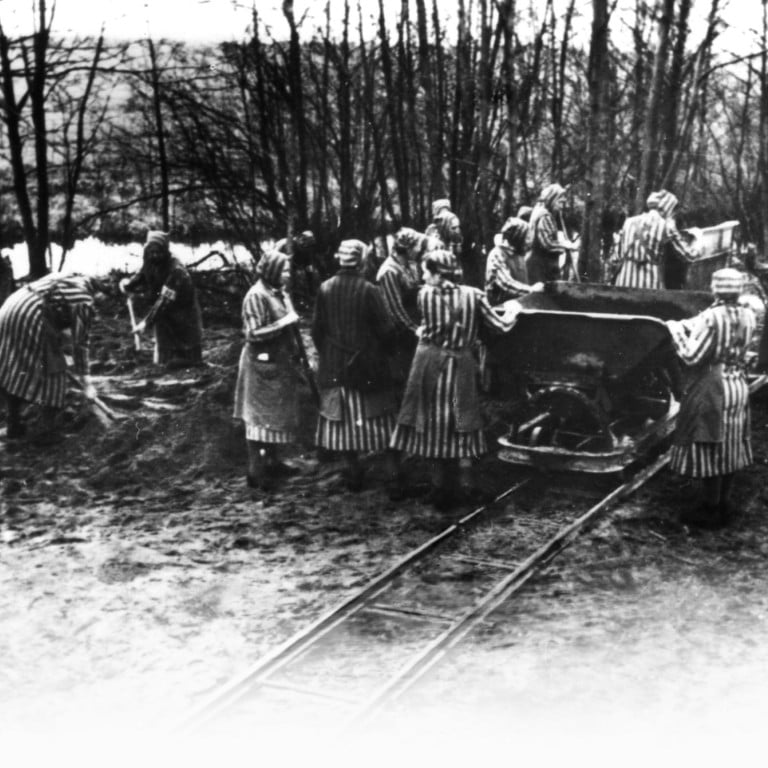
Book review: If This is a Woman - horrors and heroism in a Nazi concentration camp for women
A new book about the little-known Ravensbrück camp shows its inmates faced brutality, degradation and death
by Sarah Helm
Little, Brown


In - the title powerfully echoes , Primo Levi's 1947 account of his time in Auschwitz - Sarah Helm offers a profoundly moving chronicle of the six years Ravensbrück existed. "Just as Auschwitz was the capital of the crime against Jews, so Ravensbrück was the capital of the crime against women," she writes. So why has its history been shunted to the footnotes, its use of gas chambers denied by historians such as Robert Faurrison?
Helm speculates that the camp was smaller than many; it was hidden for years behind the Iron Curtain; survivors remained silent, thinking they'd be disbelieved. And, of course, the inmates were "only women" - but what women. Only a tiny proportion were Jewish. Most were "inferior beings" - social outcasts, gypsies, resistance fighters, political enemies, Jehovah's Witnesses, prostitutes, the sick, disabled and "mad". They came from more than 20 countries including Hungary, France, the Netherlands and the Soviet Union.
Amid the atrocities, despair and degradation, inspirational leadership, inordinate courage and the bonds of loyalty and friendship resulted in "heroism, superhuman tenacity and exceptional willpower to survive". Women who had been housewives, doctors, academics and petty thieves not only survived, they ensured that what was being done to them was documented and smuggled out to the wider world.
Ethnologist Germaine Tillion, formerly an observer of African tribes, kept a daily diary, at huge risk, of "the most essential facts; the ones that horrified the most, that were too important to commit to memory". She later gave evidence at war crime trials and lived to be 100.
The only Nazi concentration camp built for women opened in May 1939, designed to hold 3,000. It had salvias and an aviary, and later a hair salon for the guards. Prisoners slept 150 to a block. At its peak, in February 1945, it held 46,473 women. Babies were delivered and left to starve to death. In eight months, almost 600 died. Children were sterilised. Up to 50,000 women were exterminated - gassed, shot, worked to death as slave labour. Standing in cotton dresses for hours in winter for roll call reduced the population further, as did beatings and dog bites.
Local women were recruited as guards: some became monsters equipped with Alsatians and truncheons. Minor misdemeanours - curling hair - could result in 25 lashes and solitary confinement in the bunker with no bed and little food for weeks.
As you read this 768- page book, it never feels too long. You will the women of Ravensbrück to live
How did some women survive? To discover the answer Helm travelled to Poland, France, the Netherlands, Israel and other countries to interview the last few survivors and their children, filling the gaps from scant letters, documents and autobiographies.
Jeannie Rousseau, a Frenchwoman, refused to make German arms. "You can refuse what is happening," she tells Helm. "Or go along with it. I was in the refusal camp." That camp included many extraordinary women: women's rights activists Rosa Jochmann and Käthe Leichter (the latter wrote a Jewish play that resulted in six weeks in the bunker); Elsa Krug, an S&M prostitute from Dusseldorf who refused to beat her fellow prisoners; and the inspirational "humble" Yevgenia Lazarevna Klemm, unofficial leader of 500 uniformed women from the Red Army. She mothered the teenagers, maintained discipline, told "her" women to learn German to survive, and fought off spies with the instruction "don't break the circle".
The "Red Army girls" along with other women ensured that the equipment they were forced to make for the German army was sabotaged. In 1953, in Odessa, Klemm was banned from teaching and hanged herself because nobody told her why she had been banned. As you read this 768-page book, it never feels too long. You will the women of Ravensbrück to live.
The story of the 77 "rabbits" encapsulates the best and worst of Ravensbrück. From 1942, the prisoners were used as guinea pigs. In "special operations", leg muscles were cut and glass, wood and dirt inserted into wounds, which were either left untreated or treated with different types of drugs; bones were smashed and splintered. But when it was time to remove the evidence and kill the "rabbits", the whole camp conspired to keep them hidden. "The experiments had proved nothing for science," Helm writes. "But they had proved something for humanity."
The "rabbits" smuggled news of this barbarity to the outside world. In May 1944 it was broadcast on underground radio and still the International Committee of the Red Cross did nothing.
In Ravensbrück, snitches were rife. Prisoners were promoted and became as savage as the guards, including a former journalist, Carmen Mory from Switzerland. She cut her wrists before she could be executed; few guards were ultimately punished.
Even after the liberation of Ravensbrück, prisoners driven to safety on "the road to freedom" by the Red Cross were wounded and killed by allied gunfire, and, covered in sores and emaciated, raped by the liberating Russian troops, who asked the women: "Have you come from the grave?"
But still a striking number of the 120,000 who had entered Ravensbrück survived. Dr Loulou Le Porz had her "family" in block 10. After she came out, she tells Helm: "One didn't believe in the goodness of human nature any more. I had to learn it again. And I did." She paused. "But it took a long time."
